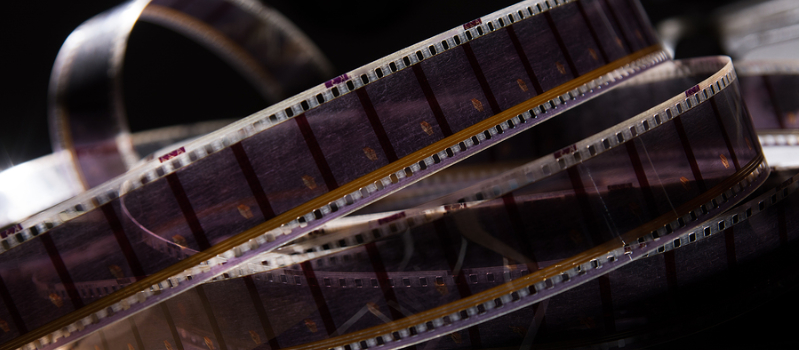
Microform, microfilm, microfiche… they all sound similar to one another. While they’re all types of media storage that store shrunken documents on photographic film, they differ from each other. And to keep it interesting, there’s also aperture cards to add to that list.
If you’re already confused, have no fear. We’re here to outline these different types of media storage. Read on to gain a better understanding of several types of microform storage, or watch the video at the end of this post.
What Is Microform?
Often referred to as microfilm, microform is the umbrella term for different types of flat or rolled media used to store miniaturized document images. The flat and rolled media are actually reels of photographic film.
The micro-sized document images are roughly 1/25 of the original page size. Aside from having a capacity of 2,000+ images, microform can also have a shelf life of 500 years if stored and cared for properly. This makes it not only a space-saving storage option, but also a sustainable one.
The Different Types of Microform
Under the umbrella of microform, you’ll find microfilm, microfiche, and aperture cards. Each of these slightly differs from one another, so let’s break them down.
Microfilm
Microfilm is similar to a movie reel. Here, the reel of photographic film is used to store tiny micro-reproductions of files, usually in sequential order. Microfilm typically comes in two sizes: 16mm and 35mm. It’s also considered one of the most stable forms of media storage, as its shelf-life can run roughly 500 years if managed properly.
Larger documents — think engineering drawings, deed books, and newspapers — are better for the 35mm film. Letter-sized pages like building permits, financial records, and other official documents, on the other hand, would use the 16mm film. Rolls of microfilm can store 2,400 letter-sized pages or 600 larger drawings on a single roll, making it very space-efficient.
Microfiche
While microfilm rolls are a series of images, microfiche is actually a flat microfilm sheet made from polyester. Usually sized around 105mm x 145mm or 4” x 5”, microfiche images are organized on a sheet as a matrix. These sheets can store roughly 60 to 100 letter-sized pages — ideal for things like NDA contracts or cashier’s checks. Despite having a smaller storage capacity, microfiche sheets can be easier to organize due to their shape and form.
Aperture Cards
Aperture cards, also known as Hollerith cards, are similar to IBM punch cards. They contain a holer, or aperture, where a single 35mm microfilm frame can be mounted. The card is coded with indexing information for the image. Aperture cards can only hold a single image and are the simplest microform storage option.
How Each Type of Microform Is Used
As the highest capacity option, microfilm is often used as a backup strategy due to the small size of the microfilm images. Typically, 16mm rolls are used for letter-sized pages (2,400 max), while 35mm rolls are used to store engineering drawings (600 max).
Microfiche is like a smaller version of microfilm. Microfiche sheets can be used like a micro-file folder to store and keep related images together. Because of its size, microfiche is typically used for standard page images.
Finally, aperture cards are the most basic and smallest microform storage option. These cards only have a capacity for a single image. With a 35mm chip, aperture cards are ideal for storing engineering drawings or other large files.
Migrating Microform to Digital Files
When it comes to data you need to use regularly, an alternative to extracting and viewing microfilm is to convert it. Going digital has multiple benefits, including:
- Saving time & improving access speed
- Tagging & indexing files for better organization
- Quickly replicating and distributing files
Once microfilm reels are scanned, or when they need to be disposed of, consider secure destruction services to destroy the physical copies. Aside from cutting the odds for theft or breaches in half, proper microfilm disposal is a key part of ensuring compliance with data protection laws like HIPAA, FACTA, and the GLBA.
Microfilm Storage With Record Nations
Record Nations partners with secure and reliable storage and scanning providers across the United States. To get started finding the one best for your storage or scanning needs, fill out the form on the right or give us a call at (866) 385-3706 for a free, no-obligation quote from services in your area.












